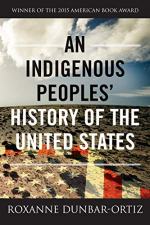
|
| Name: _________________________ | Period: ___________________ |
This test consists of 15 multiple choice questions and 5 short answer questions.
Multiple Choice Questions
1. What was the effect of Public Law 91-550?
(a) Congress agreed to return the land stolen from the Taos Pueblo.
(b) Congress assigned U.S. citizenship to Native populations.
(c) Congress set aside reparation money for the Lakota Sioux.
(d) Congress changed the borders of U.S. Indian reservations.
2. According to Dunbar-Ortiz, where was "the pseudoscience of eugenics and racial purity" (170) particularly robust in the 1920s?
(a) The United States.
(b) Canada.
(c) Germany.
(d) France.
3. What was the name of the Nez Pierce chief who tried to lead his people from Idaho to Canada?
(a) Chief Sapiah.
(b) Chief Sitting Bull.
(c) Chief Joseph.
(d) Chief Pontiac.
4. What was the name of the 1785 treaty, in which the U.S. government agreed to restrict settlement east of the Blue Ridge Mountains?
(a) The Treaty of Tordesillas.
(b) The Treaty of Holston.
(c) The Treaty of Hopewell.
(d) The Treaty of Greenville.
5. What year did Gran-Columbia splinter into five separate states?
(a) 1830.
(b) 1808.
(c) 1764.
(d) 1826.
6. What year did Andrew Jackson become president?
(a) 1828.
(b) 1832.
(c) 1830.
(d) 1834.
7. What was the name of the Lakota Sioux's sacred land, where Mount Rushmore is now located?
(a) The Green Mountains.
(b) The Great Plains.
(c) The Black Hills.
(d) The Blue Lake.
8. According to Dunbar-Ortiz, who was an outspoken supporter of American overseas imperialism in the mid-to-late 1800s?
(a) George Custer.
(b) Abraham Lincoln.
(c) John Collier.
(d) William H. Seward.
9. On August 10, 1794, the Shawnee force was overpowered by U.S. forces. What was the location of this defeat?
(a) Black Hills.
(b) Little Rock.
(c) Falling Timbers.
(d) Shining Waters.
10. What was the name of the U.S. military reservation located near Fort Lyon in Colorado?
(a) Pueblo.
(b) Grand Junction.
(c) Sand Creek.
(d) Wounded Knee.
11. What year did the Great Railroad Strike take place?
(a) 1889.
(b) 1883.
(c) 1877.
(d) 1875.
12. Which individual spearheaded the 1968 Poor People's Campaign?
(a) Malcom X.
(b) Martin Luther King, Jr.
(c) Muhammad Ali.
(d) Rosa Parks.
13. What percentage of the Philipino population died due to the U.S. army's action ins the late 1800s/early 1900s?
(a) 5%.
(b) 15%.
(c) 10%.
(d) 20%.
14. Prior to the Civil War, how many departments was the U.S. army divided into?
(a) 4.
(b) 5.
(c) 7.
(d) 6.
15. What percentage of the 16,000 Cherokees who were forced onto the Trail of Tears perished on the journey?
(a) 20%.
(b) 40%.
(c) 50%.
(d) 30%.
Short Answer Questions
1. What annual amount was promised to the Cherokees under the Treaty of Holston?
2. What state was Jackson senator of?
3. Why did the U.S. army destroy the Prophet's Town?
4. What year did Minnesota become a non-slavery state?
5. In 1805, the Choctaws ceded most of their land to the U.S. government. How much did they receive in compensation?
|
This section contains 414 words (approx. 2 pages at 300 words per page) |

|




